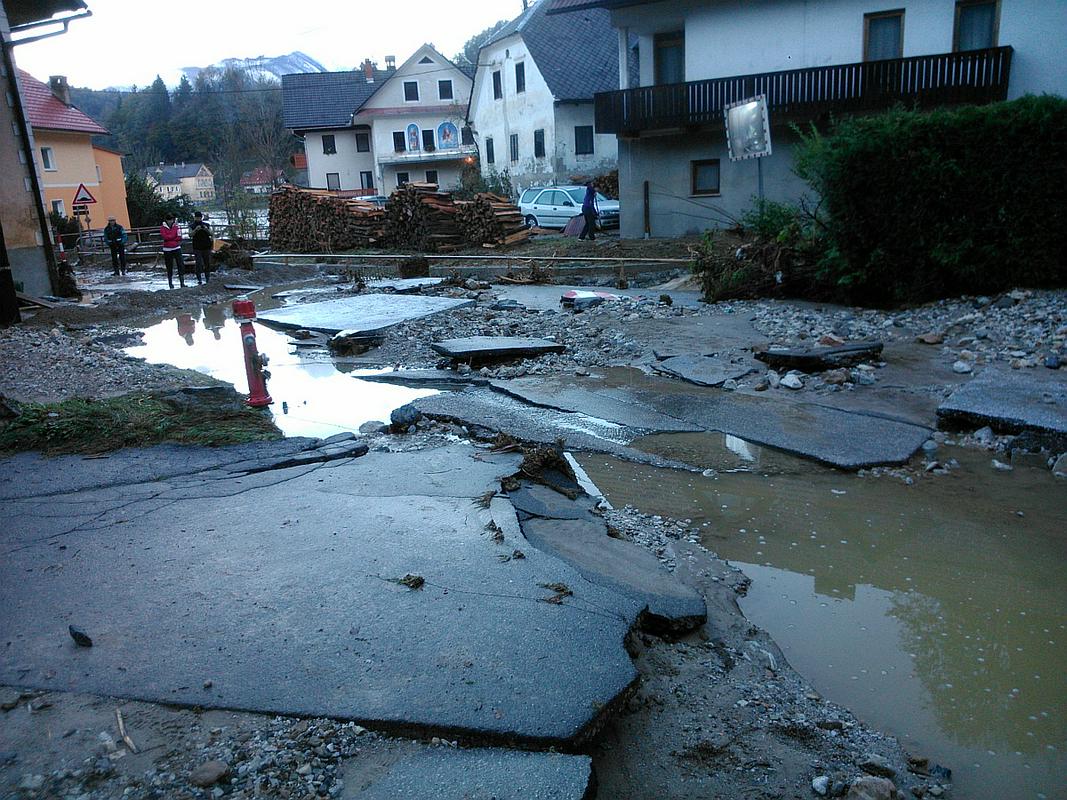
The cleanup efforts continue in areas worst hit by Wednesday’s storms in the region of Tolmin, in the Poljanska valley, and in south-east Ljubljana. Clearing the roads is a priority as some streets in the northern Primorska and Polhograjsko regions are still impassable. Strong winds of more than 70km/h can cause further problems this afternoon. Watercourses have suffered severe damage - only in the Poljanska valley the damage is estimated at around 17 million euros.
The storm which began in the night from Tuesday to Wednesday caused the biggest problems in the communities near the Sora, Gradaščica and Mali Graben rivers, as well as near small torrents in the Žiri, Gorenja vas-Poljane, Škofja Loka, Medvode, Domžale and Ljubljana municipalities. The rivers overflowed their banks on Wednesday early in the morning, but have mostly receded during the day.
More than a thousand buildings are flooded because of the storms. Many local roads are also closed. Yesterday rescue teams were busy draining water from residential buildings and clearing roads. However they did not manage to finish all the work in one day. In the Ljubljana neigbourhood of Vič, rescue teams continued draining the water during the night and they are expected to finish by noon today. The removal of bulky waste will begin today.
Cleaning up the roads hit by the storm and avalanches will also take some time. According to the Traffic Information Centre the following roads are still closed: Ljubljana-Polhov Gradec closed at Gabrje and Dobrova-Stranska vas, Čepovan-Dolenja Trebuša closed in the northern Primorska region, Bača pri Modreju-Petrovo Brdo closed, and Žiri-Goropeke closed.
How to prepare for the floods?
The fourth flooding this year poses the question on how to prepare for the floods. Torrent waters caused the Gradaščica river and its canal, Mali Graben, to overflow. On Wednesday we saw a stream turn into a raging river in only a couple of hours, flooding fields and vegetable gardens in Ljubljana's Vič area. Due to the flooding the main city artery, Tržaška Street, had to be closed for traffic. A similar thing happened four years ago, when we spoke of a "one-hundred-year" flood, reports Marjan Vešligaj for Radio Slovenija.
The Gradaščica river also flooded the Dobrova-Polhov Gradec municipality. As exactly two months ago the regional road Ljubljana-Polhov Gradec had to be closed. Avalanches ensued and families were again evacuated. Ljubljana sees the construction of a barrier, which would hold back the Gradaščica river in Dobrova, as a future solution to the problem. However, according to Dobrova Mayor, Franc Setnikar, barriers will not be built in his municipality only because of Ljubljana: "That won't solve anything. We must take care of all the facilities upriver, repair the existing facilities, build new ones and regulate the riverbeds."
But many don't agree with the mayor of Dobrova. Janez Polajnar from the Slovenian Environment Agency says that regulating the rivers is not the right long-term solution. He says that we will have to adapt to the changes in nature, and not vice versa. Polajnar adds that: "A world trend is to act towards the conservation and revitalisation of wetlands, which serve as one the greatest water storages and help to reduce hydrological extremes. That means not doing construction work in those flooded areas, but leaving them as an area where the water can spill."
And one more alarming information: Slovenian rivers on average contain a few percent less water than four decades ago.

































































